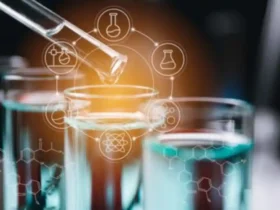The specialty chemicals industry is one of the fastest-growing and most profitable sectors in the global economy. Unlike commodity chemicals, specialty chemicals are high-value, low-volume compounds that serve a specific purpose and deliver a specific performance. These chemicals are used in a wide range of industries including pharmaceuticals, agriculture, construction, electronics, cosmetics, textiles, and automotive.
In this article, we’ll dive deep into the Top 10 High-Demand Specialty Chemicals, their applications, and an overview of how they are manufactured. If you’re looking to enter the chemical processing industry or want to explore high-margin opportunities, these chemicals are your best bet.
1. Surfactants
Applications
Surfactants are widely used in detergents, shampoos, personal care products, paints, and agrochemicals. They reduce surface tension, allowing for better spreading and wetting.
Manufacturing Process
Surfactants are produced through sulfonation or ethoxylation of organic compounds. For instance, linear alkylbenzene sulfonate (LAS), a common anionic surfactant, is made by reacting linear alkylbenzene with sulfur trioxide.
2. Specialty Adhesives
Applications
Used in electronics, construction, automotive, and medical industries. Specialty adhesives offer strength, flexibility, and temperature resistance.
Manufacturing Process
Most adhesives are made by polymerizing monomers such as epoxies, cyanoacrylates, or polyurethanes. These formulations are then mixed with curing agents and stabilizers.
3. Flavors and Fragrances
Applications
These are added to food, beverages, cosmetics, and cleaning products to enhance consumer appeal.
Manufacturing Process
Typically involves extraction, distillation, or chemical synthesis of aromatic compounds like esters, aldehydes, or terpenes. Natural products such as essential oils are also used.
4. Dyes and Pigments
Applications
Used in textiles, printing inks, plastics, and paints. Specialty dyes are valued for colorfastness, UV resistance, and custom shades.
Manufacturing Process
Dyes are made using diazotization and coupling reactions in an aqueous medium. Pigments are generally inorganic oxides synthesized at high temperatures or through precipitation.
5. Lubricant Additives
Applications
Enhance the performance of automotive and industrial lubricants by reducing wear, corrosion, and oxidation.
Manufacturing Process
Additives such as Zinc Dialkyldithiophosphate (ZDDP) are synthesized by reacting zinc oxide with phosphoric acid and alcohol. Other additives include dispersants, antioxidants, and detergents.
6. Biocides and Antimicrobials
Applications
Used in water treatment, paints, textiles, and healthcare products to inhibit microbial growth.
Manufacturing Process
Most biocides are halogenated compounds or organometallics synthesized via batch processing. Examples include triclosan and isothiazolinones.
7. Agrochemical Intermediates
Applications
These are used in the production of pesticides, herbicides, and fungicides. They improve crop yield and protect against pests.
Manufacturing Process
Agrochemical intermediates are made via chlorination, nitration, or amination of organic compounds. An example is the synthesis of 2,4-Dichlorophenoxyacetic acid (2,4-D), a common herbicide.
8. Pharmaceutical Intermediates
Applications
These are used in the synthesis of APIs (Active Pharmaceutical Ingredients) in drugs. Often highly regulated and high margin.
Manufacturing Process
The production involves multi-step organic synthesis, including reactions like alkylation, halogenation, and hydrogenation, followed by purification using crystallization or chromatography.
9. Water Treatment Chemicals
Applications
These include coagulants, flocculants, antiscalants, and disinfectants used in industrial and municipal water treatment systems.
Manufacturing Process
Common water treatment chemicals like aluminum sulfate are produced by reacting aluminum hydroxide with sulfuric acid. Antiscalants and polymers are synthesized through polymerization processes.
10. Construction Chemicals
Applications
Used in cement additives, waterproofing agents, tile adhesives, and concrete admixtures to improve durability and performance.
Manufacturing Process
Often made using combinations of polymers, plasticizers, and silicon-based compounds. For example, superplasticizers are produced through sulfonation and condensation of naphthalene formaldehyde.
Why Invest in Specialty Chemical Manufacturing?
- High Margins: Specialty chemicals often have 2-3x higher profit margins compared to bulk chemicals.
- Growing Demand: As industries become more specialized, the demand for tailor-made chemical solutions is rising.
- Export Potential: Countries like India are becoming key players in specialty chemical exports.
- Government Support: MSME and PLI schemes in India are encouraging chemical entrepreneurship.
Safety and Compliance Considerations
Specialty chemical production involves handling hazardous materials. You’ll need:
- MSDS Documentation
- REACH/ROHS Compliance
- Factory Act Registration
- Pollution Control Board NOC
- Proper PPE and Plant Safety Measures
How to Get Started in the Specialty Chemical Business
- Choose a niche based on demand and raw material availability.
- Develop or license formulations and test lab samples.
- Set up a small-scale plant with reactors, mixers, filtration, and drying systems.
- Register with BIS/ISO and local authorities for quality compliance.
- Market via B2B portals, LinkedIn, and trade exhibitions.
Final Thoughts
Specialty chemicals offer a lucrative and stable path for chemical entrepreneurs. By focusing on demand-driven, value-added products like surfactants, adhesives, and intermediates, you can tap into a growing market with global potential.
If you’re serious about entering the chemical processing business, start by identifying the most accessible formulation based on raw material sourcing, manufacturing complexity, and regulatory burden. Partner with a chemical process consultant and begin small—scale as you grow.








Leave a Reply